Many of these amazing finds were discovered by accident. So the next time you’re at the beach, keep an eye out!1 / 14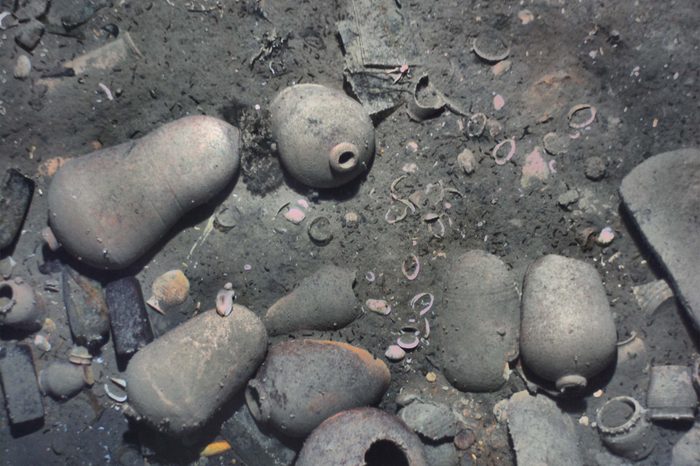 COURTESY WOODS HOLE OCEANOGRAPHIC INSTITUTIONThe San José
COURTESY WOODS HOLE OCEANOGRAPHIC INSTITUTIONThe San José
Called the “holy grail of shipwrecks,” the Spanish galleon San José was carrying a treasure of silver, gold, and emeralds worth billions of dollars today. The galleon sunk after a battle with British ships off the coast of Cartagena, Colombia, in 1708. Three hundred years later, in 2015, the wreck was discovered on the ocean floor. Details about the find were made public in May 2018. Using an underwater vehicle called REMUS 6000, the Woods Hole Oceanographic Institution helped identify the ship by its distinctive cannons, and recovery is ongoing. Want to find your own cache? Keep on the lookout for these real-life hidden treasures that haven’t been found yet.
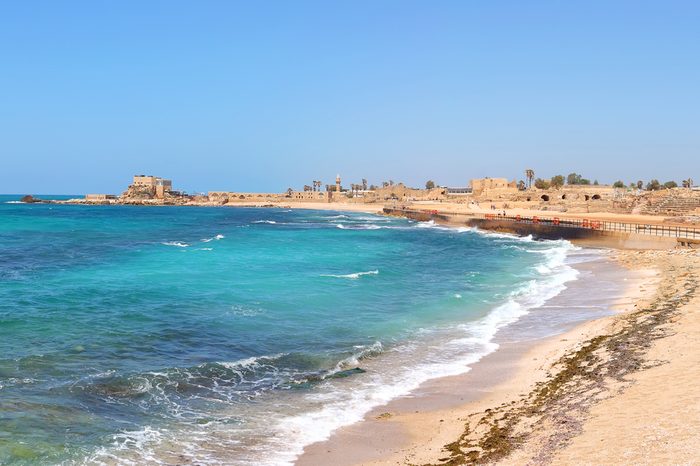 PROTASOV AN/SHUTTERSTOCKCaesarea treasure
PROTASOV AN/SHUTTERSTOCKCaesarea treasure
Imagine you’re floating along enjoying a scuba diving trip when you happen across some gold coins you think are child’s play money. Then you realize that they are actually valuable coins—more than 2,000 of them—and they’re over 1,000 years old. That’s exactly what happened to members of a diving club who found the treasure in the ancient harbor of Caesarea, Israel, in 2015. The collection, the largest gold treasure ever found in that country, was then recovered by the Israel Antiquities Authority. An investigation into the coins’ origin and why they were at the bottom of the sea is ongoing.
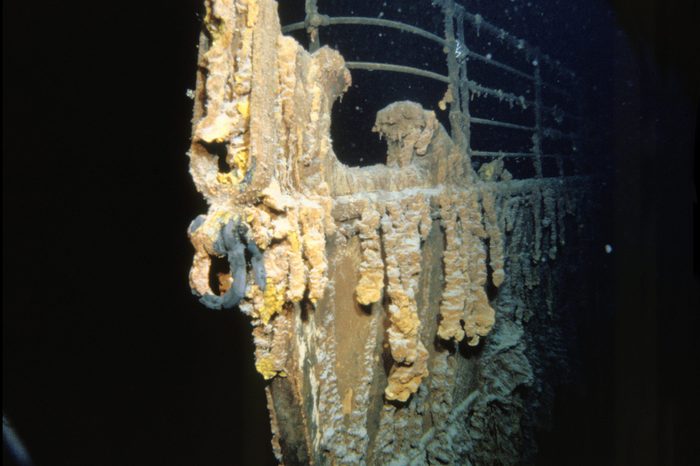 COURTESY NATIONAL OCEANIC ATMOSPHERIC ADMINISTRATIONThe Titanic
COURTESY NATIONAL OCEANIC ATMOSPHERIC ADMINISTRATIONThe Titanic
Sometimes the shipwreck itself is the treasure. Everyone knows the story of how the “unsinkable” Titanic struck an iceberg on her maiden voyage on April 15, 1912, and unfathomably sunk in the North Atlantic. But the exact location of the wreck was unknown for over 70 years until it was found in 1985 by oceanographer Robert Ballard on the ocean floor two and a half miles below the surface. And the Titanic‘s mysteries are still unfolding: It was recently revealed that Ballard was actually on a secret mission to find two sunken Cold War submarines when he discovered the sunken ship. Here are more fascinating facts you never knew about the Titanic.

JULIE JACOBSON/AP/REX/SHUTTERSTOCKThe Atocha
Turns out that 1985 was a big year for shipwrecks: The sunken “mother lode” of the Nuestra Señora de Atocha was found in July of that year off the coast of Key West, Florida. Famed treasure hunter Mel Fisher searched for 16 years before making the discovery. The ship, commonly referred to as the Atocha, was loaded with treasure to bring to Spain when she left Havana, Cuba, in 1622—and sailed straight into a hurricane. An auction to celebrate the 30th anniversary of the find allowed the public to buy pieces of the Atocha‘s treasure, including gold and emeralds. You can see more of the trove, in total estimated to be worth around $450 million, at the Mel Fisher Maritime Museum in Key West.
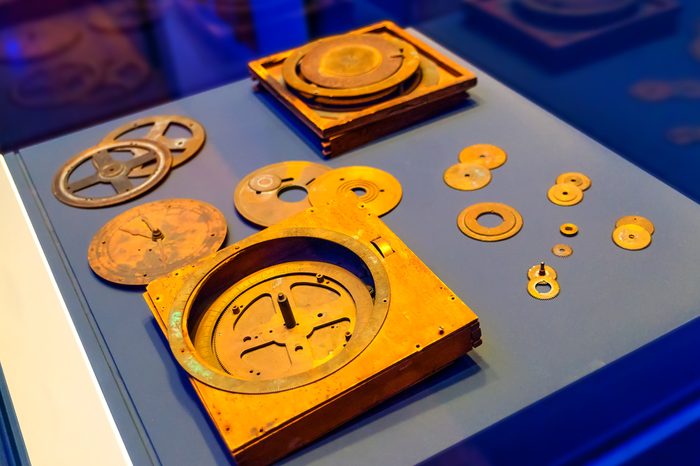 IMAGIN.GR PHOTOGRAPHY/SHUTTERSTOCKThe Antikythera wreck
IMAGIN.GR PHOTOGRAPHY/SHUTTERSTOCKThe Antikythera wreck
This ancient site off the Greek island Antikythera may have been found back in 1900, but researchers are still unearthing new treasures there. The wreck is famous for the Antikythera mechanism, a complex device made of gears nicknamed the “world’s first computer” for its ability to track the sun and moon and predict eclipses. The device is dated to the second century B.C., but nothing else like it from that time period has ever been found. Research into its purpose is ongoing. In addition, expeditions are continuing to discover archaeological treasures at the wreck, including bronze sculptures and ceramic artifacts. Check out these other ancient mysteries researchers still can’t explain.
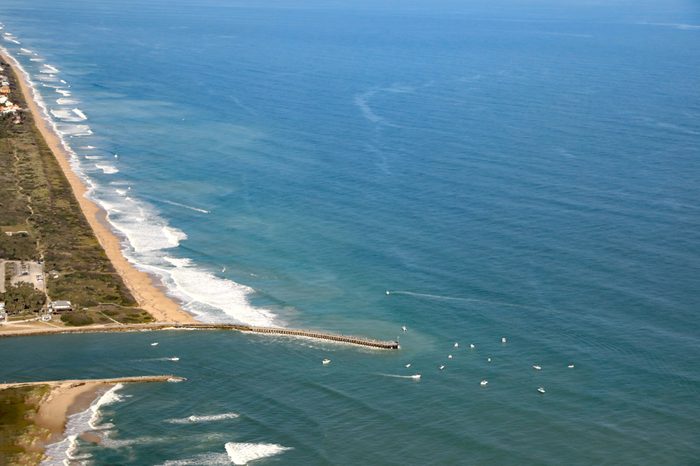 THOMAS BARRAT/SHUTTERSTOCK1715 treasure fleet
THOMAS BARRAT/SHUTTERSTOCK1715 treasure fleet
This is the wreck that keeps on giving! On July 31, 1715, a Spanish fleet of 11 ships loaded with treasure sailed into a hurricane and sank off the coast of Florida (you may remember this story from the 2008 Matthew McConaughey/Kate Hudson movie Fool’s Gold, which was based on the treasure). Since then, coins have been washing up all along Florida’s “Treasure Coast.” Major hauls are still raking in the dough, including the $4.5 million cache that was found on the same day of the wreck 300 years later in shallow water just feet from shore. Some estimates say over half of the $400 million worth of treasure is still waiting to be recovered.
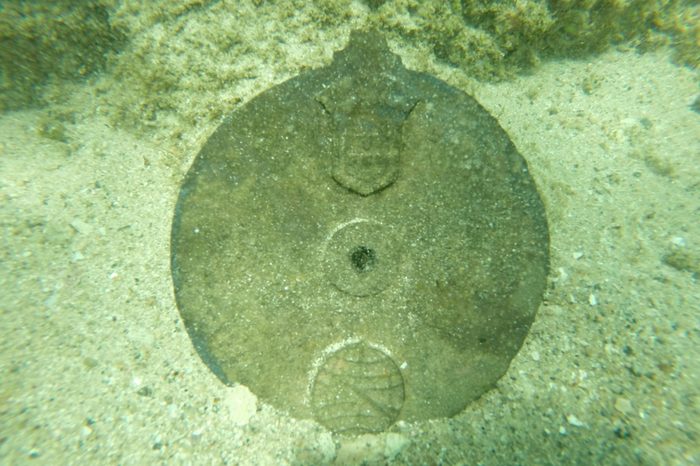 COURTESY BLUE WATER RECOVERIES LIMITEDThe Esmeralda
COURTESY BLUE WATER RECOVERIES LIMITEDThe Esmeralda
The oldest shipwreck from Europe’s Age of Exploration was just authenticated in 2016: Vasco da Gama’s Esmeralda, which was destroyed in a storm in the Arabian Sea along the “India Route” from Europe in 1503. Originally found in 1998, the wreck wasn’t excavated until almost two decades later. Rare coins, a ship bell, and other artifacts helped confirm the identity of the ship; and its treasures are still emerging. In 2017, a unique navigational tool called an astrolabe was discovered at the wreck.
 COURTESY CHRISTOPH GERIGK © FRANCK GODDIO/HILTI FOUNDATIONHeracleion
COURTESY CHRISTOPH GERIGK © FRANCK GODDIO/HILTI FOUNDATIONHeracleion
Atlantis is a myth—but sunken cities do exist. Heracleion, also called Thonis-Heracleion, was discovered off the coast of Egypt near the mouth of the Nile in 2000 by underwater archaeologist Frank Goddio. The city figures into ancient lore, connected with Heracles of Greek mythology as well as Helen of Troy. Today, sunken statues lend an eerie, other-worldly quality to the site, and historic artifacts including jewels, ceramics, and coins make it a valuable—yet priceless—find.
Speaking of finding jewels, read about the lucky hunter who finally found the famous Forrest Fenn treasure after all these years.
 COURTESY DONN PEARLMANShip of Gold
COURTESY DONN PEARLMANShip of Gold
One of the greatest lost treasures in U.S. history, the SS Central America went down off the coast of South Carolina in a hurricane in 1857, loaded with Gold Rush gold. And the story of the “Ship of Gold’s” discovery is almost as dramatic as its sinking: In 1988, treasure hunter Tommy Thompson found the wreck, but after a legal battle over the rights to the loot, he went on the lam until the authorities caught up with him in 2015—and the location of much of his $50 million haul is still in question. In 2014, a subsequent expedition retrieved another $40 million in gold bars and coins, which went on display in January 2018. And there might still be more down there.
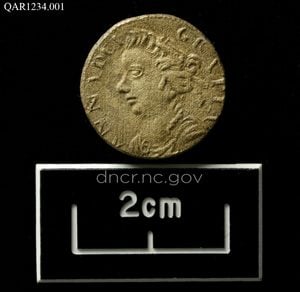
COURTESY NORTH CAROLINA PUBLIC RECORDSBlackbeard’s Queen Anne’s Revenge
Any list of treasure would be incomplete without an honest-to-goodness pirate ship. The real-life Blackbeard’s flagship, the Queen Anne’s Revenge, ran aground off the coast of North Carolina in 1718, but the shipwreck wasn’t found until 1996, and not confirmed as the QAR until 2011. Pirate relics including cannons, an anchor, and a hilt that may have held the sword of Blackbeard himself have been recovered, but not much gold or jewels—yet, anyway. In the meantime, see artifacts from the QAR at the North Carolina Maritime Museum in Beaufort.
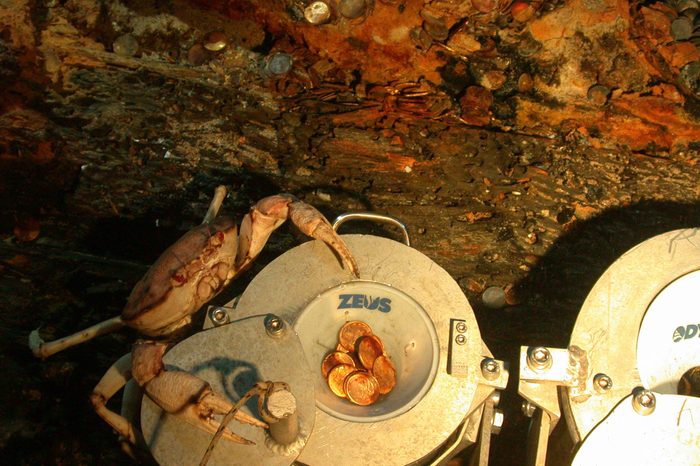 COURTESY SEASCAPE ARTIFACT EXHIBITS, SHIPWRECK.NETSS Republic
COURTESY SEASCAPE ARTIFACT EXHIBITS, SHIPWRECK.NETSS Republic
This paddle wheel steamship sank in a hurricane off the coast of Georgia in 1865. It was bound for New Orleans to aid in post-Civil War reconstruction and loaded with gold and silver—up to $150 million, by some estimates. The wreck was found in 2003 by Odyssey Marine Exploration, which recovered a whopping 51,000 coins. You can own one of them yourself by going to coin-collecting sites. Over 14,000 artifacts from the time period were also recovered.
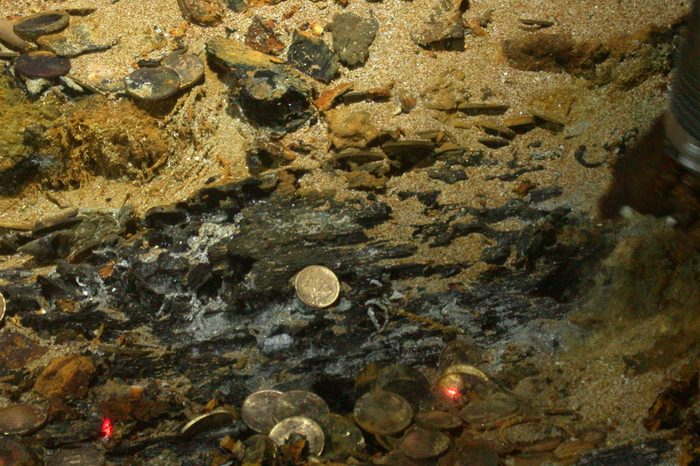 COURTESY SEASCAPE ARTIFACT EXHIBITS, SHIPWRECK.NETSS Gairsoppa
COURTESY SEASCAPE ARTIFACT EXHIBITS, SHIPWRECK.NETSS Gairsoppa
Another find from Odyssey Marine Exploration, the merchant ship SS Gairsoppa is a more recent wreck. It sunk after being torpedoed by Nazis in 1941 off the coast of Ireland. The ship was carrying an estimated $190 million in silver from India to help the British war effort; $38 million was recovered after the wreck was discovered in 2011. And a treasure of a different sort was found later, currently exhibited at The Postal Museum in London: a collection of 700 letters to loved ones miraculously preserved inside the wreck, three miles under the sea.
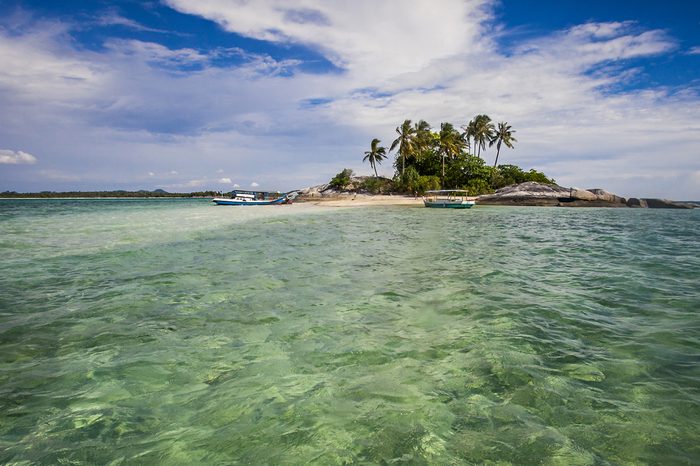 SONY HERDIANA/SHUTTERSTOCKBelitung shipwreck
SONY HERDIANA/SHUTTERSTOCKBelitung shipwreck
A 9th-century ship was found by Indonesian fisherman off Belitung Island in 1998, and it proved that trading between China and the Middle East existed during that time by way of the “Maritime Silk Route.” The wreck is also the largest collection of Chinese Tang Dynasty artifacts found in one place, so it’s also called the “Tang Treasure.” Controversy erupted in recent years over an exhibition of the priceless treasures, highlighting the ongoing tug of war between commercial treasure salvage and archaeological preservation of shipwrecks. Next, don’t miss the most stunning deep-sea sights in the world.
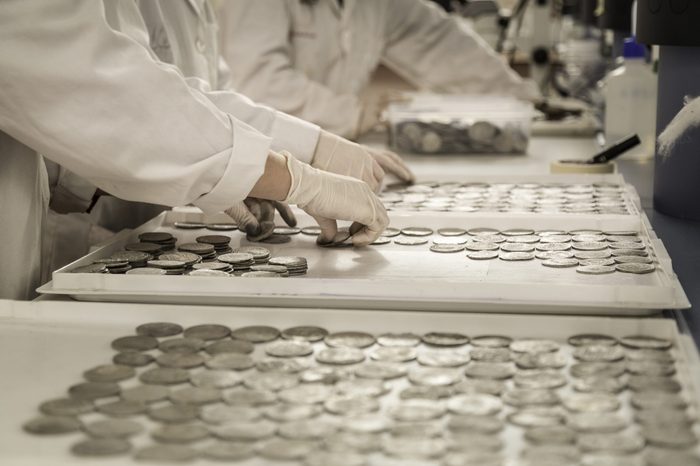 COURTESY SPANISH NATIONAL MUSEUM OF UNDERWATER ARCHAEOLOGY ARCHIVE/L.PLANANuestra Senora de las Mercedes, aka “Black Swan”
COURTESY SPANISH NATIONAL MUSEUM OF UNDERWATER ARCHAEOLOGY ARCHIVE/L.PLANANuestra Senora de las Mercedes, aka “Black Swan”
Any ship with a code name has to be worth a pretty penny. The Nuestra Senora de las Mercedes, a Spanish ship laden with gold and silver treasure from South America that sank off the coast of Portugal in 1804 after a battle with the British. The ship was found in 2007 by a U.S. salvage company that code-named the $500 million treasure “Black Swan.” After it was determined that the Black Swan loot did belong to the Mercedes, the booty was awarded back to the Spanish government in 2012. Want to do a little treasure hunting of your own? Check out these hidden treasures rumored to be in the United States.







